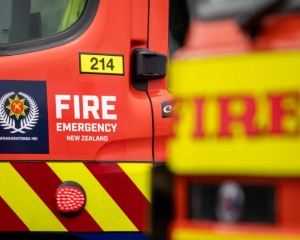New Zealand’s beautiful lakes, rivers and extensive coastline makes it a paradise for those wanting to enjoy water-based activities.
Be it boating, kayaking, swimming, surfing or fishing, the country has something for everyone. But, as New Zealanders know only too well, with those opportunities also comes danger.
Every year about 100 people die in New Zealand from drowning and 2016 was no different. In 2015, the figure ballooned to 113, up 25% on the previous year. Of most concern was, according to Water Safety New Zealand, 86 of those drownings were preventable. Men continue to be over-represented in the statistics, accounting for about 80% of deaths.
Water Safety New Zealand has set itself a goal of reducing the annual death toll to 50 by 2020.But those numbers will only reduce if people play a part through a change of behaviour and attitude. A safer and more responsible approach to water safety is needed.
The death of a 19-year-old man in the Bannockburn inlet of Lake Dunstan last month highlighted the risk people faced in getting out of their depth in water.
A 6-year-old girl, her mother and the 19-year-old man got into difficulties swimming in the inlet. The man saved the girl’s life but was unable to get back to shore himself and died.
In November, eight people died after the fishing charter vessel The Francie capsized in rough weather approaching the Kaipara bar.
The Transport Accident Investigation Commission is still investigating the disaster but many in the fishing industry have criticised the boat’s skipper for attempting to cross the bar in such poor conditions.
It appears not everyone was wearing a life jacket.
Under the agency’s Maritime Operator Safety System the commercial boat was required to carry enough life jackets for everyone aboard. Those aboard were required to wear them at all times unless the skipper deemed it safe not to. The skipper was also
required to ensure everyone wore a life jacket at all times when crossing the bar and in adverse weather.
Maritime New Zealand has promised to get tough with boat users over the holiday season and will carry out random check on lifejacket use, as well as monitoring boat speeds. Anyone caught offending could be fined $300.
The publicity surrounding these deaths does not appear enough of a wake-up call and so far during the holiday period there have been some near misses and stupid behaviour.
Two days before Christmas a group of six adults, including one who was holding a baby, were criticised after heading out on Lake Benmore without life jackets.
Despite life jackets being on board, only the skipper was wearing one. The local harbour master described it as a case of pure stupidity.
According to Water Safety New Zealand, swimming is the most common cause of drowning, followed by power boat deaths. Many children do not have the same access to pools and regular swimming lessons as they once did. It raises the question: is a lack of investment in pools costing people their lives?
School pools used to be part of education programmes but sky-rocketing running costs and increased health and safety legislation made the task of keeping them open prohibitive.
World champion medalist and Olympian Lauren Boyle has joined Water Safety New Zealand in a campaign to help keep school pools open. More than 150 school pools closed in the past six years and a further 130 risk being shut permanently. Boyle has visited at-risk school pools and talked about the role they play in the country’s education system.
In Mosgiel, community support is driving plans to get a new year-round swimming pool in the town. While the cost, which will inevitably involve some ratepayer funding, has been opposed by some, a new pool will enable people in that catchment, including school children, to have access to swimming lessons throughout the year. That might just save someone’s life.











